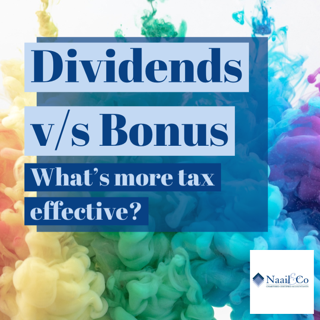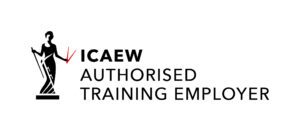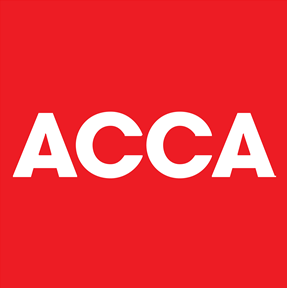Dividend or Bonus?
What's more tax effective?
Tax changes mean that the choice between paying dividends or taking a bonus is narrowing, especially as corporation tax rises to 25% from April 2023.
Lets have a detailed look at the pros and cons for both, dividends and bonus.
Dividend versus bonus is an important tax planning exercise for the owner-managed company but for some time it’s been largely academic as the dividend has had the edge in most circumstances.
However, changes made in recent years have narrowed the gap between the dividend and bonus, and from April – when the main rate of corporation tax increases by six percentage points from 19% to 25% – the dividend’s advantage can no longer be taken for granted.
In this article, I’ll look at how to determine which of the dividend and the bonus is the most tax-efficient in your circumstances. Please do remember that there are other considerations, including the company law requirements relevant to dividends.
Let’s begin with a quick summary of the tax rules, rates and allowances applying for 2023-24 for the dividend and the bonus.
Dividend
A dividend is paid out of the company’s post-tax profits. This means that it is not deducted in calculating the company’s profits subject to corporation tax, and so paying a dividend does not reduce the company’s corporation tax bill.
For the individual, the dividend is taxed at the dividend rates of income tax, and these apply across the UK. There is a tax-free dividend allowance and for 2023-24 this is £1,000, down from £2,000. The basic rate of tax is 8.75%, the higher rate 33.75% and the additional rate 39.35%.
The tax due is paid through self assessment. So, for a dividend paid in 2023-24, the full amount of tax due would be payable on 31 January 2025, except where payments on account are required on 31 January 2024 and 31 July 2024.
Bonus
For the individual, income tax and National Insurance contributions (NICs) are payable on the bonus.
The rates of income tax depend on where in the UK the person is resident as different rates apply in Scotland compared to England, Wales and Northern Ireland.
For a taxpayer resident in England, Wales or Northern Ireland, the rates are 20% in the basic rate band, 40% in the higher rate band and 45% in the additional rate band. The higher rate band limit was £150,000 but it is reduced to £125,140 for 2023-24.
The rates of NICs are 12% for earnings above £12,570 and up to £50,270, and 2% above £50,270.
NICs are also payable by the company, at 13.8% on earnings above £9,100.
Income tax and NICs are paid through the PAYE system.
The company is entitled to corporation tax relief for the bonus and the NICs it has paid, meaning that it can deduct both in arriving at its profits subject to corporation tax. Depending on the circumstances, this could save corporation tax at the small profits rate of 19% or at as much as 26.5% where profits fall in the marginal relief band.
Two important points to note: the wholly and exclusively rule applies, and relief will be given on a paid basis (rather than the accruals basis) where the bonus is paid more than nine months after the end of the company’s accounting period.
Which is the most tax-efficient, dividend or Bonus?
So, how do we calculate which of the bonus and dividend is most tax efficient in the circumstances?
There are a number of ways to approach this but here I’m going to keep the cost to the company the same and identify which option gives the highest after-tax receipt for the individual.
Let’s work through an example. A company has profits of £500,000 for the year. It has funds of £40,000 available to pay as a dividend or bonus. For the recipient, the full amount will fall within the higher rate band.
If the company goes down the bonus route, it will have retained profits after corporation tax at 25% of £345,000, as shown below. To get the same result under the dividend route – that is, retained profits of £345,000 – it will need to pay a dividend of £30,000.
£ | Bonus £ | Dividend £ | |
Profits | 500,000 | 500,000 | |
Bonus | 35,149 | ||
Employers NICs (13.8%) | 4,851 | ||
Bonus plus NICs | (40,000) | n/a | |
Taxable profits | 460,000 | 500,000 | |
Corporation tax | (115,000) | (125,000) | |
Profit after tax | 345,000 | 375,000 | |
Dividend | n/a | (30,000) | |
Retained profit | 345,000 | 345,000 |
The next step is to work out the tax and NICs on the dividend and bonus for the individual. As shown below, under the bonus route, the receipt for the individual after income tax and NICs is £20,386; and under the dividend route it is £20,213. So, the bonus route gives the higher after-tax receipt for the individual by £173.
Bonus £ | Dividend £ | |
Bonus | 35,149 | n/a |
Dividend | n/a | 30,000 |
Gross receipt | 35,149 | 30,000 |
Less, income tax | ||
· at 40% on bonus | (14,060) | n/a |
· at 33.75% on dividend income in excess of £1,000 | n/a | (9,787) |
Less, employee’s NICs (2%) | (703) | n/a |
Net receipt for director shareholder | 20,386 | 20,213 |
To put this into context, had we done the same exercise for 2022-23, when the rate of corporation tax was 19%, the dividend would have given the higher after-tax receipt, by £2,138. So that’s a swing of over £2,300 from dividend to bonus in just one tax year due in large part to the increase in the rate of corporation tax from 19% to 25%.
Dividend or Bonus: Conclusion
The simple example above illustrates the importance of carrying out detailed calculations for your clients this year. Much depends on the circumstances but there are some broad principles to bear in mind, a dividend is likely to be more tax efficient than a bonus where the company continues to pay tax at 19%, or where the recipient is a basic rate taxpayer.

Our service to you
If you are a self employed, business owner/director of company looking to get your accountancy and taxation matters sorted, look no further. We, at Naail & Co, are pro-active and easily accessible accountants and tax advisors, who will not only ensure that all your filing obligations are up to date with Companies House and HMRC, but also you do not pay a penny more in taxes than you have to. We work on a fixed fee basis and provide same day response to all your phone and email enquiries. We will also allocate a designated accounts manager who would have better understanding of your and business financial and taxation affairs. Book a free consultation call using the link below.
Related pages:
Get further information from the following pages;
Related Blogs:
Get further information from the following blogs;
Create an income from directors loan account
Tax tips for directors to be actioned before end of financial year
Inheritance tax planning for main residence
Inheritance tax: Gifts for maintenance of family
Subscribe to our newsletter
BUSINESS HOURS
Monday – Friday
- 9:00 am – 5:30 pm
Pages:
Menu








